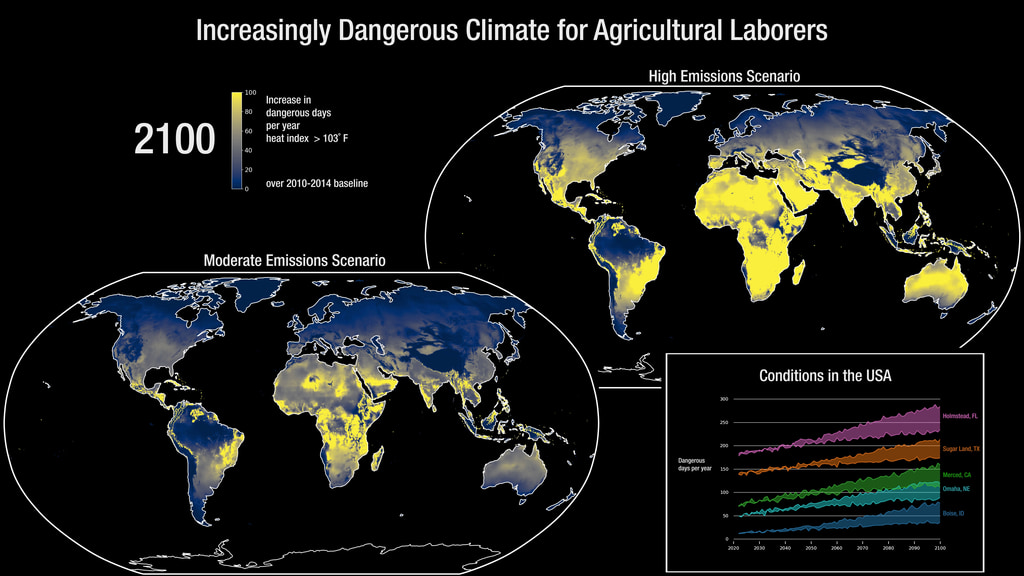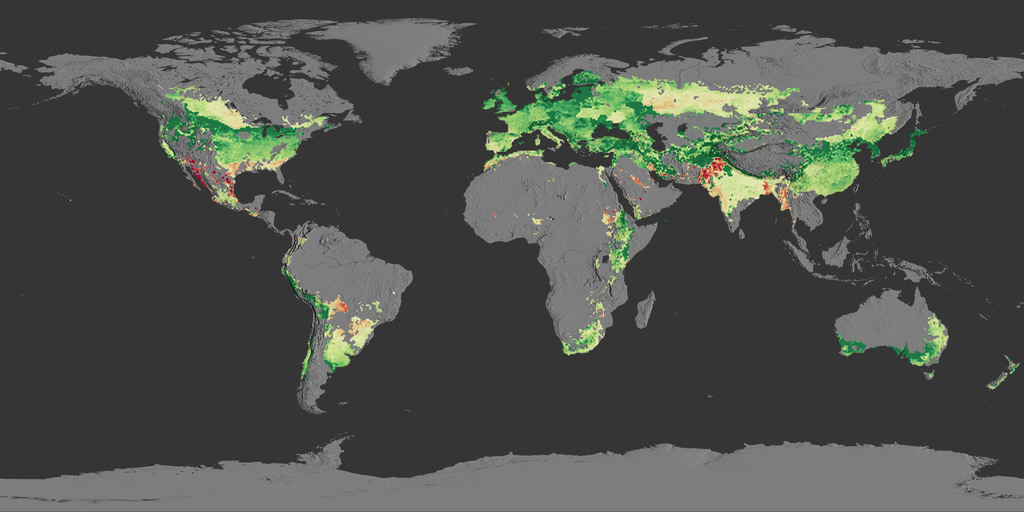Impact of Climate Change on Global Agricultural Yields
Data visualization of predicted wheat and maize yields through the end of this centaury based on an ensemble of crop and climate models.
Climate change will affect agricultural production worldwide. Average global crop yields for maize, or corn, may see a decrease of 24% by late century, if current climate change trends continue. Wheat, in contrast, may see an uptick in crop yields by about 17%. The change in yields is due to the projected increases in temperature, shifts in rainfall patterns and elevated surface carbon dioxide concentrations due to human-caused greenhouse gas emissions, making it more difficult to grow maize in the tropics and expanding wheat’s growing range.
Maize is grown all over the world, and large quantities are produced in countries nearer the equator. North and Central America, West Africa, Central Asia, Brazil and China will potentially see their maize yields decline in the coming years and beyond as average temperatures rise across these breadbasket regions, putting more stress on the plants.
Wheat, which grows best in temperate climates, may see a broader area where it can be grown in places such as the northern United States and Canada, North China Plains, Central Asia, southern Australia and East Africa as temperatures rise, but these gains may level off mid-century.
Temperature alone is not the only factor the models consider when simulating future crop yields. Higher levels of carbon dioxide in the atmosphere have a positive effect on photosynthesis and water retention, more so for wheat than maize, which are accounted for better in the new generation of models. Rising global temperatures are linked with changes in rainfall patterns and the frequency and duration of heat waves and droughts. They also affect the length of growing seasons and accelerate crop maturity.
To arrive at their projections, the research team used two sets of models. First, they used climate model simulations from the international Climate Model Intercomparison Project-Phase 6 (CMIP6). Each of the five climate models runs its own unique response of Earth’s atmosphere to greenhouse gas emission scenarios through 2100.
Then the research team used the climate model simulations as inputs for 12 state-of-the-art global crop models that are part of the Agricultural Model Intercomparison Project (AgMIP), creating in total about 240 global climate-crop model simulations for each crop. By using multiple climate and crop models in various combinations, the researchers were able to be more confident in their results.
Data visualization of predicted wheat and corn yields through the end of this centaury based on an ensemble of crop and climate models. This version uses the label 'corn' instead of 'maize'.
Credits
Please give credit for this item to:
NASA's Scientific Visualization Studio
-
Visualizer
- Mark SubbaRao (NASA/GSFC)
-
Technical support
- Laurence Schuler (ADNET Systems, Inc.)
- Ian Jones (ADNET Systems, Inc.)
-
Scientist
- Jonas Jaegermeyer (Columbia University)
Release date
This page was originally published on Wednesday, March 2, 2022.
This page was last updated on Sunday, January 5, 2025 at 12:13 AM EST.
Related papers
https://www.nature.com/articles/s43016-021-00400-y
https://www.nature.com/articles/s43016-021-00400-y


